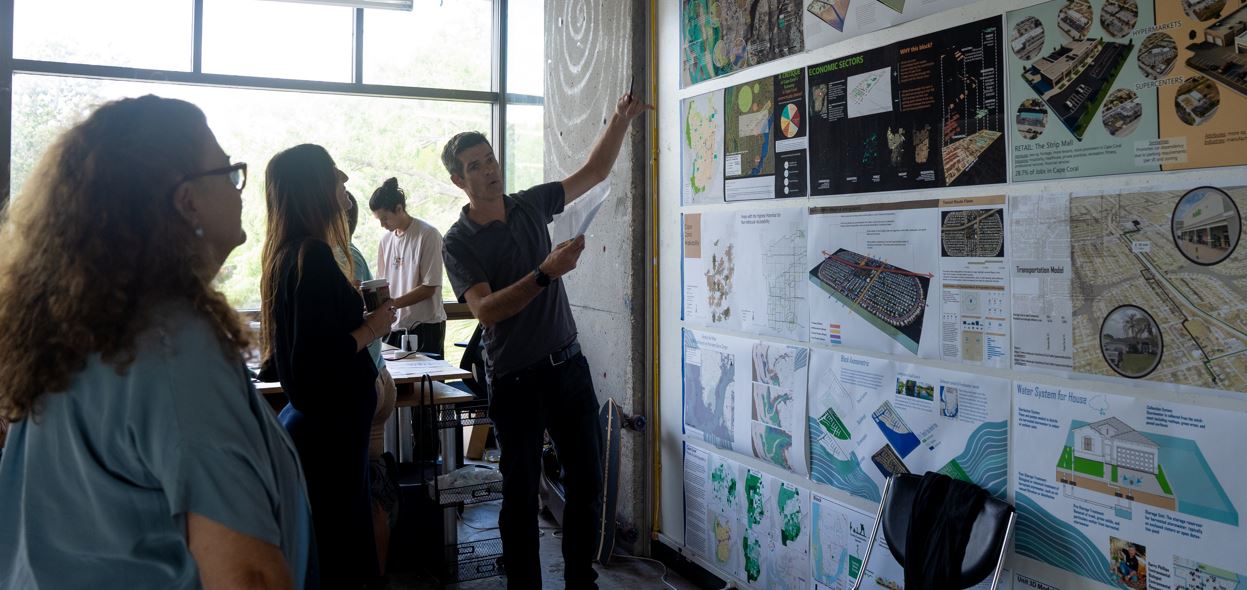This interdisciplinary studio, led by the University of Florida, proposes a series of “suburban retrofits” to envision greater resilience, equity, and sustainability in Southwest Florida, which was recently devastated by Hurricane Ian. Multi-disciplinary teams focus on the city of Cape Coral, a poster child for Florida’s rampant post World War II suburban development, to explore design interventions systems at the scale of city and neighborhood.
Through a series of architectural designs, landscape infrastructures, planning/policy interventions, as well as multimedia tools to reimagine a transformed “civic core,” student teams visualize different possible futures for the study area. Design interventions culminate in the creation of an interactive “digital twin” using the Unreal Engine platform.
Funded by the National Academies of science (NAS) Gulf Research Program (GRP), the GulfSouth “super-studio” combines architecture, landscape architecture, urban and regional planning, as well as journalism and construction management students to explore the critical challenges facing the Gulf of Mexico’s coastline and communities. UF was one of five universities awarded funding for the creation of interdisciplinary architectural studio design courses that engage with the unique challenges and opportunities of the Gulf of Mexico region.
On Tuesday, April 25, professionals and academics from across the Gulf South joined students to discuss and evaluate the design studio proposals. The audience asked questions and provided ideas and considerations for future iterations of the students' designs, and students explained their thought and creation processes. Students also shared their experience and outputs working with the UnReal Engine platform to demonstrate how their projects would look and feel using the digital medium. Overall, the class accomplished its main goal: people came together across fields to imagine a more resilient, more innovative future for Cape Coral.












